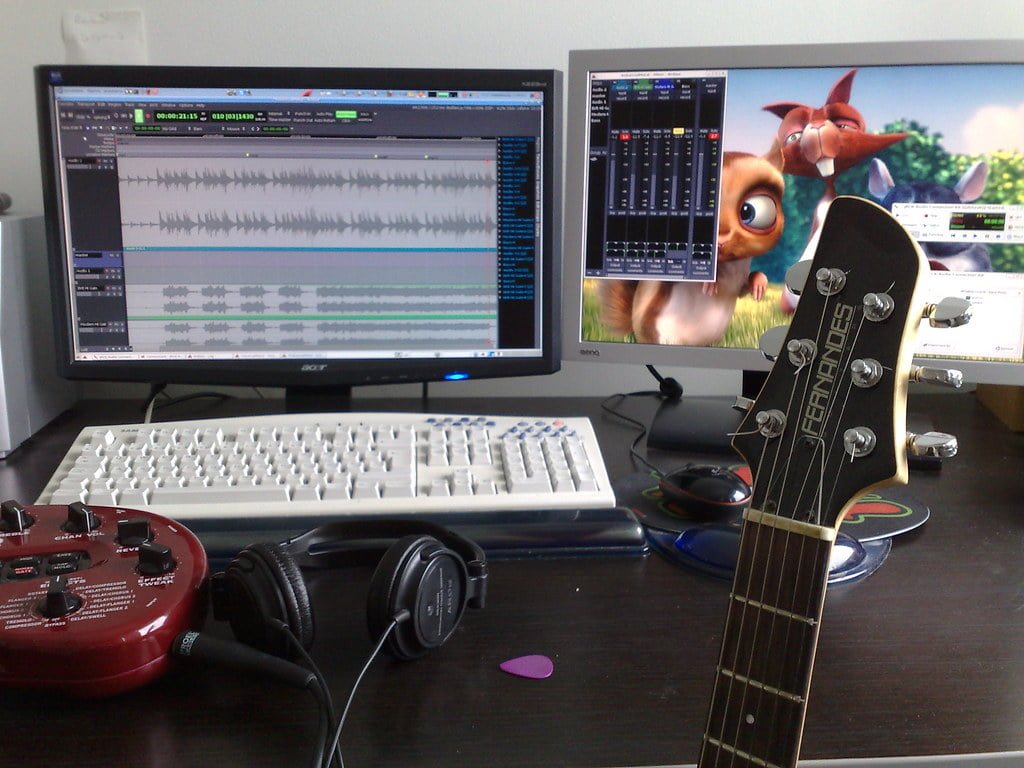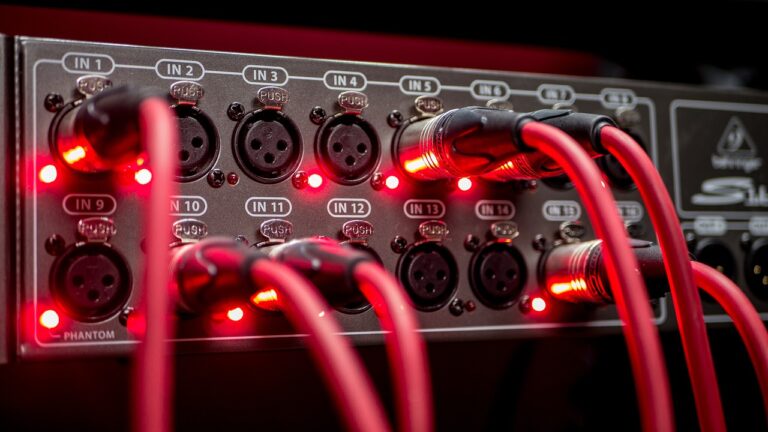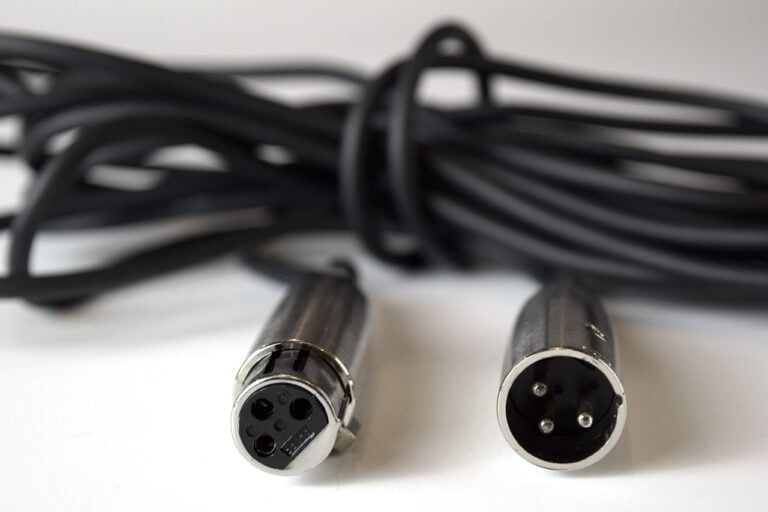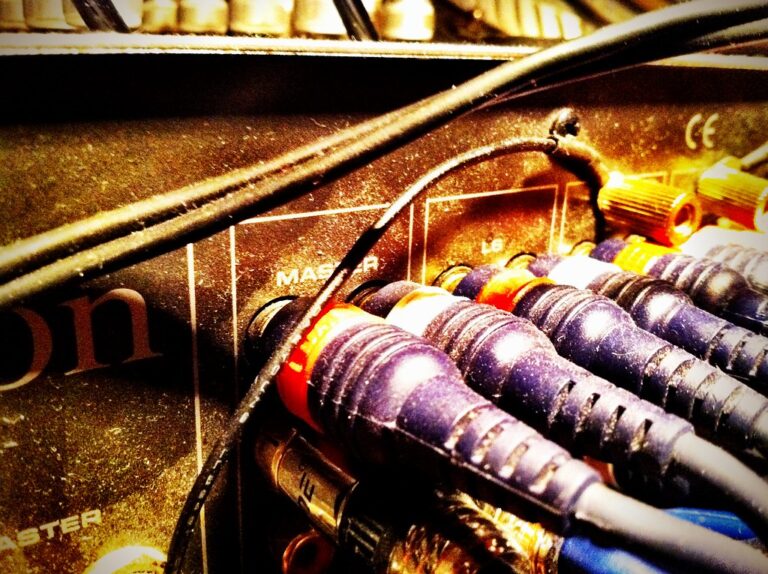Ground Loops: Identifying and Eliminating Hum in Your Studio Setup
Imagine a persistent hum in your studio setup, akin to a faint but irritating buzz in the background of a phone call. It’s subtle yet undeniably present, disrupting the clarity you endeavor for in your audio recordings. How do you pinpoint the culprit behind this unwelcome noise? Join me as we unravel the mysteries of ground loops and explore practical strategies to restore peace and pristine sound quality in your studio environment.
We are supported by our audience. When you purchase through links on our site, we may earn an affiliate commission, at no extra cost for you. Learn more.
Understanding Ground Loop Interference
In my experience with audio setups, understanding ground loop interference is important to maintaining clear sound quality and avoiding disruptions in the signal. Ground loop noise can be a nuisance in audio systems, causing audible hums or buzzes that detract from the overall listening experience. This interference occurs when there are voltage differences in the ground points of interconnected devices, leading to unwanted currents flowing through the audio cables. The presence of ground loops in a setup can introduce noise into the audio signal, degrading its quality and causing distortion.
To combat ground loop interference, it is essential to properly manage the grounding of all devices in the system. Ensuring that all equipment shares a common ground point can help minimize the potential for ground loops to form. Additionally, using balanced audio cables and power conditioners can help reduce the likelihood of ground loop noise affecting the audio signal. By addressing these fundamental issues at the root, one can significantly improve the overall sound quality and eliminate the disruptive effects of ground loop interference in audio setups.
Understanding the mechanisms behind ground loop noise and its impact on audio systems is essential for troubleshooting and resolving such issues effectively. By implementing proper grounding techniques and utilizing appropriate equipment, it is possible to prevent ground loops from compromising the audio signal and ensure a clean, uninterrupted listening experience.
Causes of Ground Loops
Ground loop occurrences stem from minute voltage differentials in earth terminals caused by leakage currents and cable resistances. This phenomenon is prevalent in audio setups where multiple interconnected devices share a common ground reference. Here are key factors contributing to ground loops:
- Multiple Paths: The presence of multiple ground paths in a system can lead to circulating currents and voltage differentials, manifesting as a buzz or hum in audio equipment.
- Ground Paths: The interconnected nature of audio equipment can create unintended ground paths, exacerbating the issue by allowing currents to flow through different routes.
- RFI (radio frequency) Noise: External interference, such as RFI noise, can also induce ground loop problems by introducing additional currents into the system, further complicating the ground reference.
- Need for Ground Loop Isolator or Isolation Transformer: Implementing devices like ground loop isolators or isolation transformers can break the unwanted ground paths, effectively isolating the problematic components and mitigating the hum or buzz caused by ground loops.
Understanding the intricate relationships between ground paths, current flow, and the necessity for proper grounding techniques is essential in combating ground loop issues in audio setups. By utilizing isolation methods and ensuring a well-designed grounding scheme, the detrimental effects of ground loops can be reduced to a large extent.
Diagnosing Audio Hum Issues
Upon encountering persistent audio hum in a studio setup, diagnosing the root cause is essential for effective troubleshooting. Audio hum, often stemming from ground loops, can be a frustrating issue to deal with. Ground loops occur when interconnected audio equipment have varying earth voltages, leading to interference that manifests as a background buzz or hum in the audio system. To diagnose audio hum problems, it is important to identify specific traits of the hum, such as its intensity, frequency, and whether it changes with equipment adjustments.
Common methods for diagnosing audio hum include testing different signal paths, isolating individual components, and using balanced audio connections to minimize interference. Additionally, checking for radio frequency interference (RFI) sources, such as nearby electronics or wireless devices, can help pinpoint the root cause of the issue. Proper grounding techniques, such as ensuring all components share a common earth ground and using power conditioners to regulate voltage, are essential for reducing the likelihood of ground loops and subsequent audio hum.
In a studio setup or home theater environment, understanding the nuances of signal ground, interference sources, and the importance of proper grounding practices is key to diagnosing and resolving audio hum problems effectively.
Eliminating Ground Loop Noise
When troubleshooting audio hum issues in your studio setup, addressing ground loop noise is an important step in achieving clear and interference-free audio output. Ground loop noise, often caused by varying earth voltages among interconnected audio devices, can introduce unwanted noise and interference into your sound system. To effectively eliminate ground loop noise, consider the following steps:
- Isolating Ground Loops: Properly isolating the ground loops in your setup is essential to reducing interference and eliminating the hum caused by ground loop noise.
- Using Hum Eliminators: Employing hum eliminators or ground loop isolators can effectively cut the loop path that causes the unwanted noise, helping to restore clean audio output.
- Ensuring Proper Grounding: Verify that all audio devices in your setup are grounded properly to prevent the occurrence of ground loop noise and its associated hum.
- Guarding Against RFI: Radio Frequency Interference (RFI) can exacerbate ground loop noise issues. Shielding cables, using balanced connections, and placing audio devices away from sources of electromagnetic interference can help mitigate RFI-related problems.
Tips for Studio Setup Optimization
For vital studio setup performance, prioritizing proper cable management and power source separation is essential to minimize ground loop interference and guarantee clean audio output. To make sure your studio is free from unwanted hum and noise, using balanced audio connections such as XLR or TRS cables is vital. These connections help prevent ground loop interference by maintaining signal integrity throughout your setup. Additionally, grounding equipment correctly and avoiding multiple earth connections are crucial steps in ensuring a quiet studio environment. Implementing high-quality cables and connectors further enhances the integrity of your audio signals and reduces the likelihood of ground loop issues.
Regularly monitoring and testing your audio equipment for ground loop problems can help preemptively address any hum in your studio. By staying proactive and attentive to the details of your setup, you can maintain a professional and interference-free studio environment. Remember, small adjustments like cable organization and proper grounding can make a significant difference in the overall quality of your audio output. So, take the time to optimize your studio setup to enjoy clean, crisp sound without the distractions of ground loop interference.







